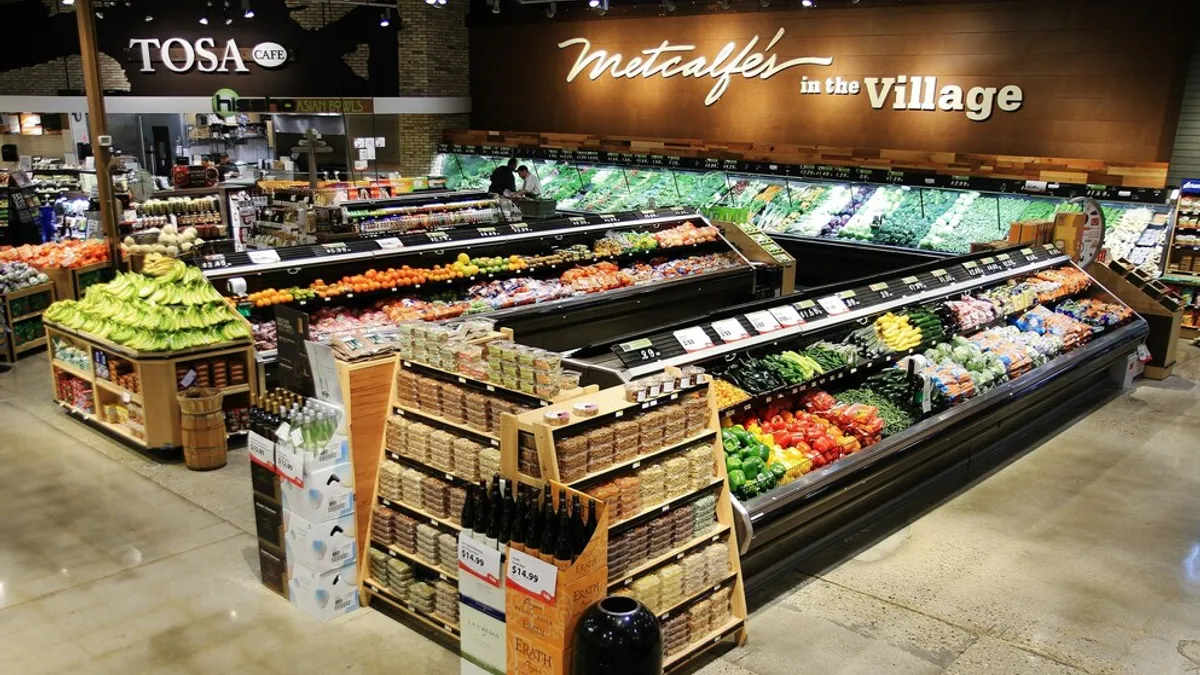Dive Brief:
- U.S. consumers are buying fresh meat more now than before the pandemic started, and shopping trips in grocers’ meat departments have increased compared to 2019, per the new Power of Meat report from the Food Industry Association (FMI) and the Foundation for Meat and Poultry Research and Education.
- Meat sales rose 5.7% in 2022 compared to the previous year, to $87.1 billion, and volume was down 2.5%, according to IRI data cited by FMI.
- While consumers haven’t dramatically changed their consumption habits, more than three-quarters said they are seeking ways to save money amid high inflation by changing the amount, type, cut and/or brand or by switching where they shop, the report noted.
Dive Insight:
Grocers are facing competition from other retailers for where consumers buy meat, FMI noted.
Traditional grocers have seen sales market share for meat and poultry drop from 42.8% in 2019 to 40.3% in 2022, which has resulted in them missing “several billions” of dollars, per IRI data cited by FMI. Supercenters, clubs and online outlets, which are over-indexing on millennial shoppers, have gained in share, FMI said.
While quality, appearance and price are unsurprisingly the top purchase decision drivers for meat, FMI found that shoppers have pivoted their attention to total package price and private brands: 63% of shoppers now prefer manufacturer and private brands when buying fresh meat and poultry, with 70% saying the same for processed meat.
For money-saving measures in the meat department, consumers’ top strategies include buying only the amount needed (42%), looking for coupons (35%), stocking up when there is a sale (35%) and buying fewer items with organic, grass-fed or other claims (17%). Sixteen percent said they are cooking more meatless meals, FMI noted.
Among the 33% of respondents who said they are trying to eat less meat or chicken, 52% said they are doing so due to costs, FMI found. That’s up from 16% who said the same in 2020
“The research tells us that we’re seeing a more price-conscious shopper, but we’re also witnessing shoppers seeking ‘simple pleasures’ and that’s one area among others where the meat department can delight,” Rick Stein, vice president of fresh foods for FMI, said in a statement. “For example, shoppers concerned about food prices might opt to splurge on an at-home date-night meal.”
Stein noted that food retailers can help shoppers by highlighting value-added meat options and providing meal solutions. More than half of surveyed consumers (55%) said they use some or mostly semi- or fully-prepared foods, and 73% said they sometimes or frequently buy pre-cut, pre-marinated or pre-seasoned meat, the report noted. Those findings indicate the significance of convenience to make at-home prep and cooking easier for shoppers.
The report, which was prepared by 210 Analytics, is based on a survey between Dec. 14 to Dec. 16, 2022, of 1,607 grocery shoppers who describe themselves as meat eaters or flexitarians, along with department point-of-sale and consumer engagement data from IRI.












